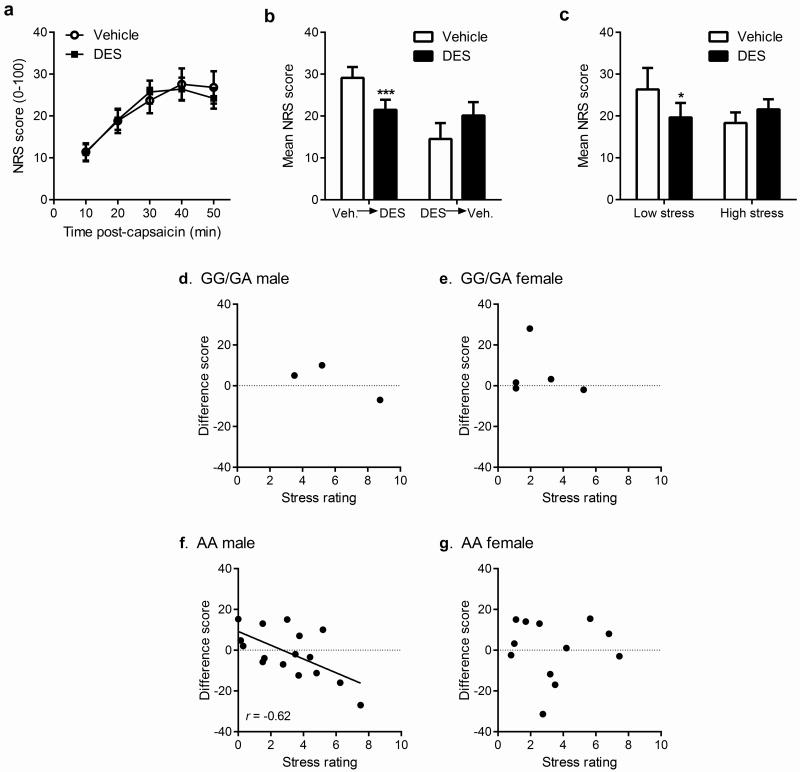Fig. 4.
Evidence for the interaction of stress with desmopressin analgesia in 38 human subjects. a) Numerical rating scale (NRS) ratings of capsaicin pain (0–100) at 10-min intervals for desmopressin versus saline reveal that the overall effect of desmopressin (DES) was non-significant. Symbols represent mean (± SEM) NRS score. b) The order of drug administration interacted significantly with drug condition, such that desmopressin was highly efficacious in those receiving it in the second session (Veh.→DES), but not among those receiving it in the first session (DES→Veh.). Bars represent mean (± SEM) NRS scores averaged over the 50-min testing period; ***p<0.001 compared to Veh. c) Using a median split, subjects were divided into high- versus low-stress groups, which revealed a significant stress × drug interaction, such that desmopressin produced significant analgesia for low-stress subjects, but no effect of desmopressin emerged among high-stress subjects; *p<0.05 compared to vehicle. Bars as in b. d–g) The correlation of desmopressin analgesia (expressed as saline–desmopressin difference scores in mean NRS scores; positive values represent desmopressin analgesia) with stress levels (0–10) is only seen in male subjects with the TT genotype at rs10877969 within AVPR1A.

